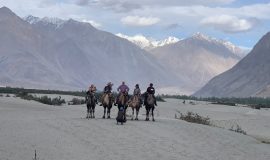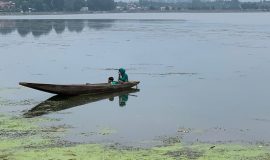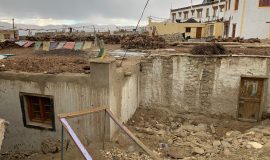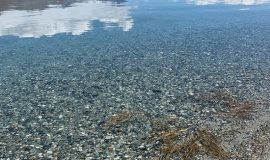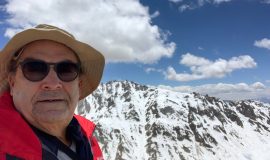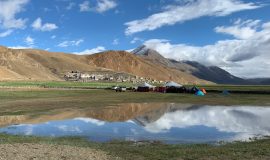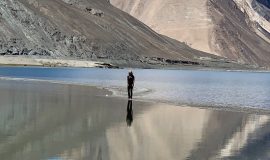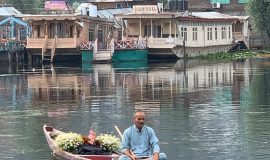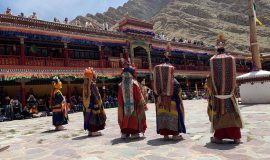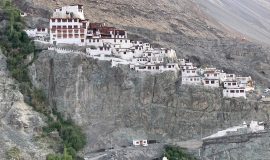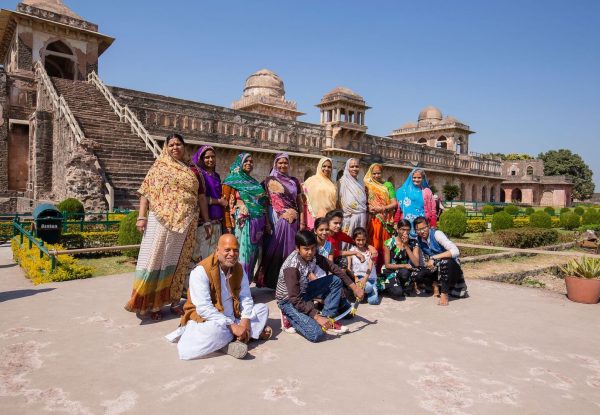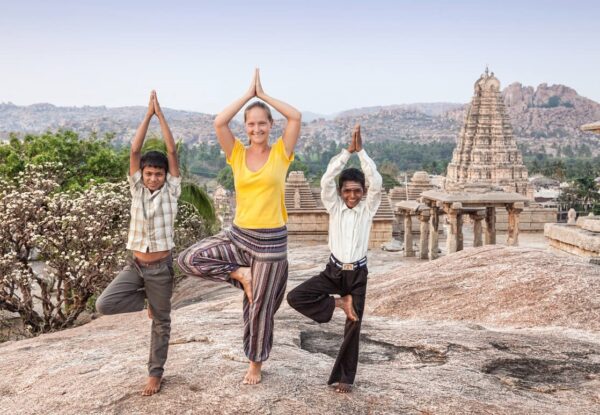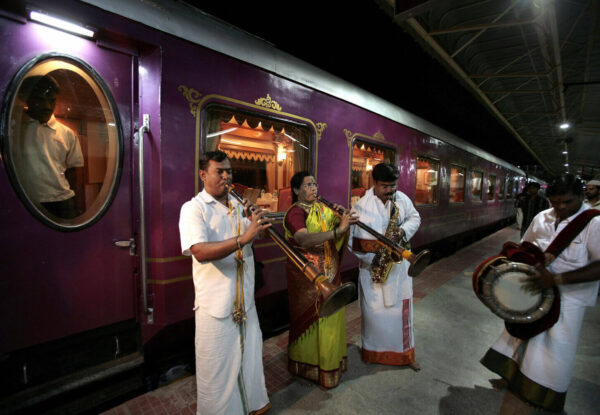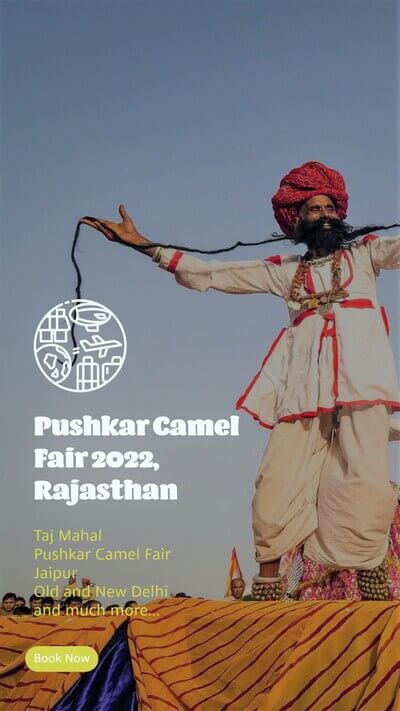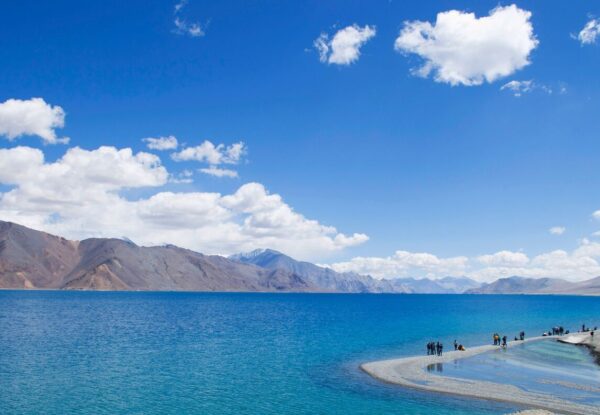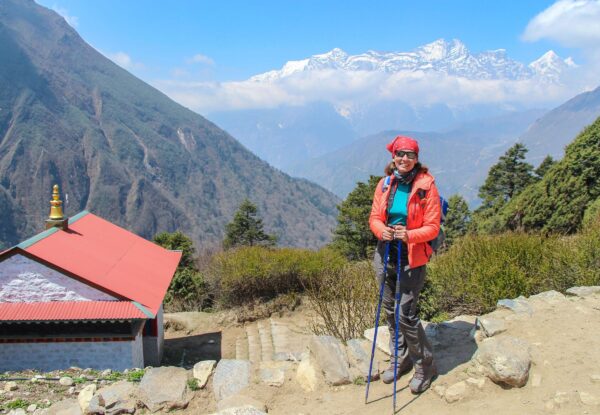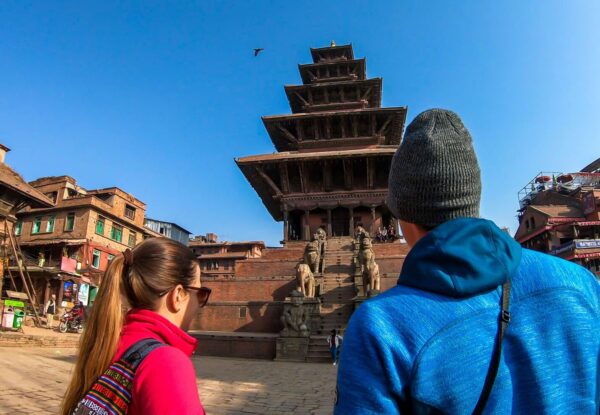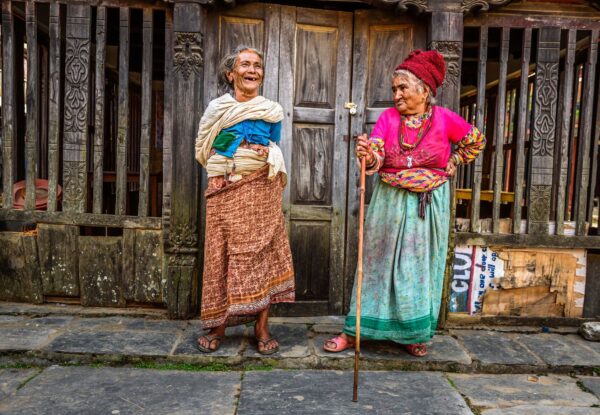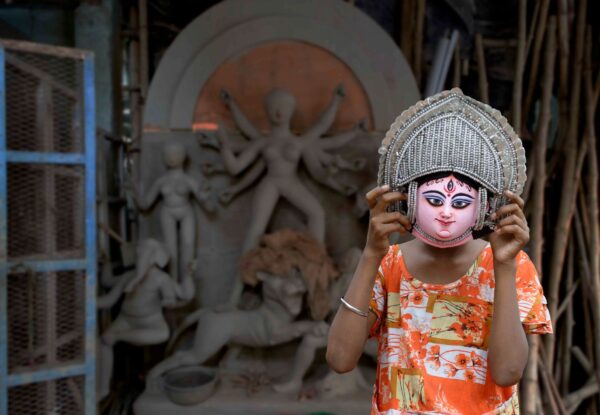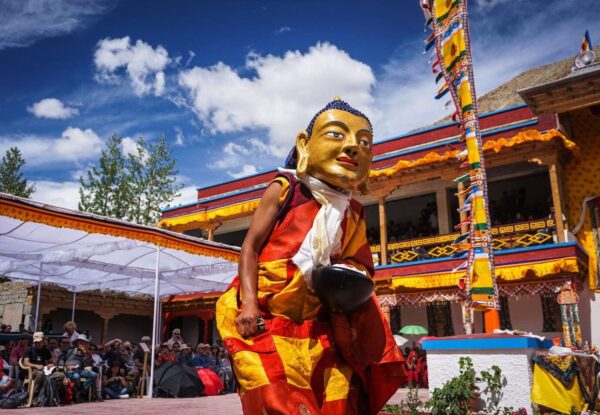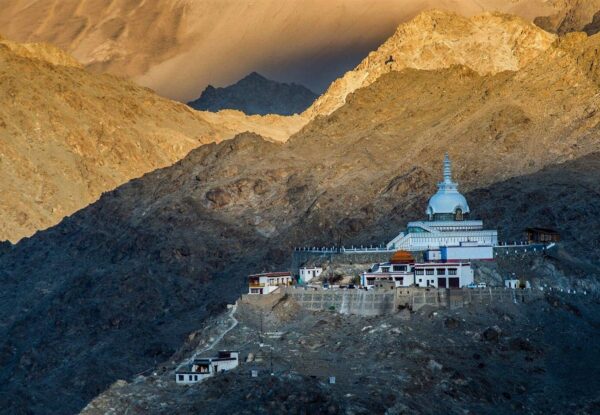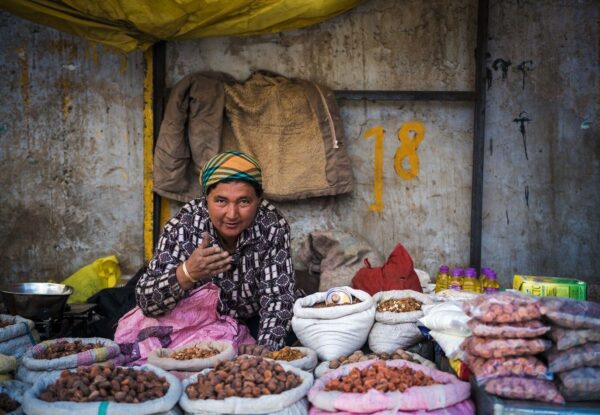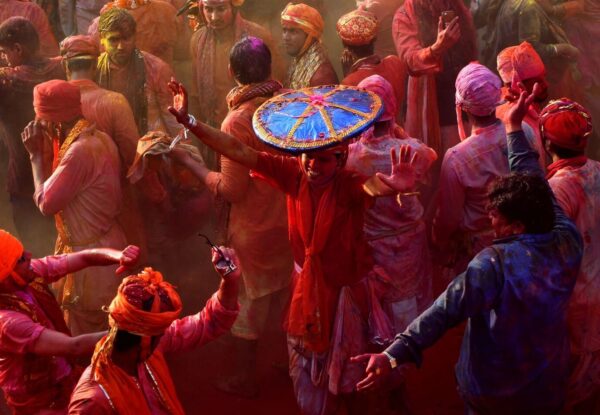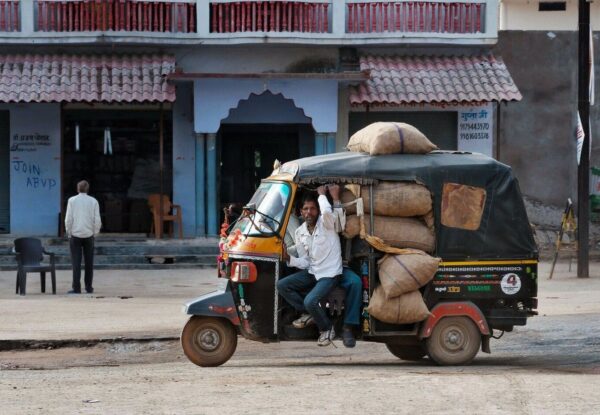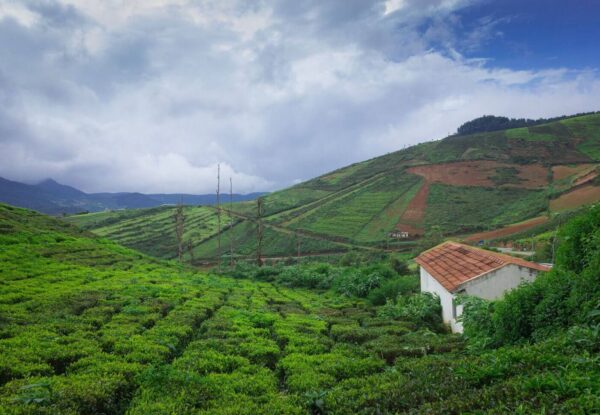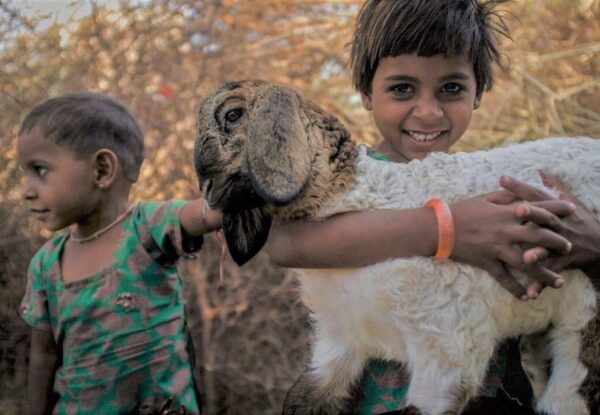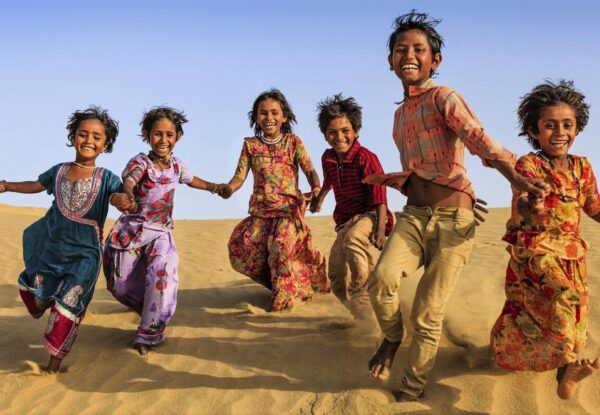Highlights of Heavenly Kashmir And Scenic Ladakh Valley Tour
Trip Details
- On this unique 13-day Kashmir Leh Ladakh India Tour you will explore the culture and striking natural beauty of India’s two most dramatic regions, namely Ladakh, and Jammu & Kashmir. Both are mountainous areas high up in the Himalayas, and located not too far apart, but this is where the similarity ends. We will travel across desolate desert-like plains, drive alongside crystal clear rivers in deep fertile valleys, and overnight in snug little village hotels. As we travel from Buddhist Ladakh to Muslim Kashmir, you will discover the cultural differences between these two amazing regions.
- We travel by plane from New Delhi to Srinagar, summer capital of Kashmir, in the gorgeous Kashmir Valley. Land of pristine lakes and majestic mountains, in colonial times it was popular with British Raj officials. Today, many people favor it as a getaway from the sweltering heat and clamor of lower lying areas. You will spend many idyllic hours and a few nights on a luxury, comfortable houseboat in a secluded corner of beautiful Lake Dal. You will do trips on a shikara, the typical mode of transport on the lake, visit Srinagar’s mosques, walk down interesting alleys, and find bargains in the markets and shopping areas, to take back home. The beautiful Mughal gardens will enchant you, and we will bond with nature on easy countryside walks, one of which is in the Dachigam National Park, where you will see Kashmir stag, or Hangul, an endangered species.
- Next on our itinerary is Ladakh, land of ancient Buddhist heritage and Tibet-like scenery. On the drive the majestic Himalayan peaks will be our constant companion, we will encounter remote little villages and come across hilltop monasteries. We will stop at Alchi, Lamayuru and Likir Monasteries, set in an other-worldly mountain desert landscape, watch colorful prayer flags dancing in the breeze, and listen to the chanting of monks. An unforgettable experience awaits you in this remote, extraordinary region.
- In stark contrast to the moon-like landscapes of the mountains, we will explore secluded villages nestling like life-giving oases in the verdant Indus Valley. Rivers and streams coming down from the heights provide water for cultivated fields, willows and poplars. Leh and the village of Nimmu has much to offer; we will wander the streets, meet the locals, spend time in the famous Thiksey and Shey Monasteries, and overnight in off-beat little hotels in quiet villages where guests are always welcomed with open arms and a comfortable bed.
- We leave merry Leh and drive along narrow, desolated mountain roads, and cross the peaks at Khardung La, amongst the highest navigable passes on earth. Between Diskit and Hundar we soar up dunes, and descend into the breathtaking ‘Valley of the Flowers’, the Nubra Valley. Then the only sounds you will hear are that of nature’s music; water rushing in streams, leaves dancing in the wind, the blissful quiet presence of the mountain peaks, and now and then the soft chanting of monks.
- Reaching Chang La Pass, the views will take your breath away; the crisp blue waters of Lake Pangong Tso lies quiet and serene amid soaring white peaks. This lake is the highest water mass to be found on earth, and a view no-one ever forgets.
- The Hemis Festival (June 28 to June 29, 2023) is a highlight not to be missed. It is an important date on Ladakh’s religious calendar, and you will partake in celebrating Guru Padmsambhava, the Buddhist sage’s birthday. Devotees come from far and wide to watch the mask dances, gain religious merit, meet up with family and old friends, and join in the fun. Evil spirits are warded off, and people return home with renewed energy and fervor. And, of course, so will you!
- The end of the journey is celebrated with a last surprise; a fabulous flight over and through the snowy white peaks of the Greater Himalayan Mountains, on our way back to New Delhi.

India your way, your route, your style
• Price based on two persons in a double room
• Prices are in USD Excluding international flights
• Do you prefer to travel alone or would you like to come to India with a group of friends? We will be happy to tailor-made your tour program that meets all your wishes and needs
| Travel Period | PRICE PER PERSON | |
|---|---|---|
| Mar 15, 2024 – Oct 15, 2024 | from Price on Request (Deluxe) | INQUIRE NOW |
| Mar 15, 2024– Oct 15, 2024 | from Price on Request (Luxury) | INQUIRE NOW |
Would you like to have the trip tailored to your wishes?
Our itineraries are only examples and suggestions and can be customized individually. For example, a trip can be shortened or extended with additional destinations or monuments, the hotels can be a mix of 4 and 5 star etc. Let us know your personal wishes so that we can adapt the trip to your wishes. Connect with our travel expert for a 1:1 consultation and receive your obligation free travel proposal. Together with the travel request we will send you the hotel list so that you can get a picture of the hotels selected on the internet. We promise ✔Competent and Friendly Guides ✔Expert Drivers ✔Best Hotels ✔24/7 Support. Read more on Why Vacation India?
Get in Touch: info@vacationindia.com / +91-99274-65808 (India Calling & Whatsapp) / USA/Canada: 1 (888) 414-6804
Included in your Kashmir And Ladakh Valley Tour:
- 13-day tour starting and ending in New Delhi
- Accommodation in a double or twin room with breakfast included
- A fully air-conditioned Toyota Innova vehicle, accompanied by an English-speaking driver for all transfers, touring and sightseeing according to the itinerary
- All expenses regarding the vehicle and driver, such as fuel, parking charges, tolls, interstate tax, meals, driver accommodation and meals
- Domestic flight from New Delhi to Srinagar & Leh to New Delhi
- All transfers from the airport and railway station
- Inner line permits for Lamayuru, Nubra, Pangong Lake, or wherever required
- English-speaking local guides in Srinagar (Kashmir), and Leh
- Entry fees to monuments for sightseeing
- Provision of assistance upon arrival and departure at airports and train stations
- 24-hour support via our local representative offices
- An exciting camel ride in Hunder
- Complimentary mineral water in the vehicles
- All fuel charges, interstate taxes, driver allowances, parking and toll taxes
Services not included:
- Camera and video fees at sightseeing venues (Most of the monuments do not charge any camera fees)
- Other side attractions, aside from those specifically mentioned above
- Meals, aside from those mentioned above
- Tips, porter fees and personal expenses
- Visa and insurance
KASHMIR AND LADAKH
**This review was written in Spanish and has been translated using using Google Translator
It was my seventh trip to India and I can say that the most incredible of all that I have made to date (and it will not be the last).
For almost 20 years I have dreamed of getting to know Kashmir and Ladakh, the little Tibet, but political problems prevented me from going to that region of India over and over again, which I can assure you is the most fabulous of all the ones I have visited to date. Its so different people, its art, monasteries, lakes, in short, its exceptional humanity has captivated us from day one.
I contacted Vikas by chance in the month of April, and immediately achieved a harmony that bore fruit in this perfectly organized trip. Congratulations because we have not had a single failure.
NARESH, our friend, our exceptional companion and today a friend on this great journey, has been an incomparable piece that has made the journey, -which I already knew-, much more pleasant. His sympathy, his knowledge, his more than acceptable Spanish, his desire to please, his education, everything, absolutely everything, has been perfect.
And what about the tour: who wants to know unique places in the world, dream landscapes, come to Kashmir and Ladakh. Trust Vikas and especially NARESH.
Thank you, thank you, both of you
A hug
Juan Villalobos
To receive the list of Hotels selected for this tour, please email us at info@vacationindia.com
Keywords: Kashmir Leh India Tour, Leh Ladakh India Kashmir Tour
Similar Tours You May Like
Best of Kashmir and Leh Ladakh
Fly from New Delhi to Srinagar (Kashmir) ➜ Gulmarg ➜ Pahalgam ➜ Sonamarg ➜ Kargil ➜ Mulbekh ➜ Lamayuru Monastery ➜ Likir ➜ Sangam Viewpoint (Confluence of Zanskar and Indus Rivers) ➜ Spituk ➜ Magnetic Hill ➜ Leh ➜ Khardung La ➜ Nubra Valley ➜ Diskit ➜ Hunder ➜ Turtuk ➜ Lake Pangong Tso ➜ Chang La ➜ Hemis ➜ Thiksey ➜ Leh ➜ Fly from Leh to New Delhi
Everest Base Camp Trek
Kathmandu ➜ Flight to Lukla ➜ Hike to Phakding ➜ Dhudh Kosi (Sherpa Villages, Namche Bazaar) ➜ Khumjung (Kunde to Acclimatize) ➜ Thyangboche Monastery ➜ Kyanjuma ➜ Khumbu Valley ➜ Imja Valley ➜ Dingboche ➜ Lobuche ➜ Everest Base Camp (Gorak Shep, Kala Pattar, Climb Down to Pheriche) ➜ Kathmandu
Go Nepal: A 12-Day Nepal Experience
Kathmandu (Thamel Area, Leisure Time) ➜ Chitwan National Park ➜ Pokhara ➜ Tikhedhunga ➜ Ghorepani ➜ Tadapani ➜ Ghandruk ➜ Dhampus ➜ Pokhara ➜ Kathmandu
Classic Nepal Tour: Kathmandu, Bandipur, Chitwan, Pokhara
Kathmandu (Thamel Area) ➜ Swayambhunath ➜ Durbar Square Bazaar ➜ Hanuman Dhoka ➜ Patan ➜ Bhaktapur ➜ Pashupatinath and Boudhanath ➜ Bandipur ➜ Manakamana Temple ➜ Pokhara ➜ World Peace Pagoda ➜ Davis Falls ➜ Phewa Lake ➜ Chitwan National Park ➜Kathmandu
East India Sojourn – Kolkata, Darjeeling and Sikkim (13 days)
Kolkata ➜ Darjeeling ➜ Sikkim ➜ Pelling ➜ Kalimpong ➜ Kolkata
From Manali to Leh: Tour the Sights of Ladakh
New Delhi (Start), Amritsar (Punjab), Mcloead Ganj (Dharamshala), Manali, Keylong via Rohtang La Pass, Tso Kar, Leh, Hemis Monastery, Thiksey Monastery, Leh Palace, Shanti Stupa, Phyang Monastery, Alchi, Likir, Diskit Monastery, Nubra Valley, Pangong Tso via Shyok River, New Delhi (End)
On the Footsteps of Himalaya (Leh, Ladakh, Kashmir and Zanskar)
New Delhi (Start) ➜ Srinagar (Kashmir) ➜ Gulmarg ➜ Panikhar via Sonamarg ➜ Kargil ➜ Padum via Rangdum ➜ Kargil ➜ Lamayuru ➜ Wanla ➜ Photoksar ➜ Lingshed ➜ Alchi ➜ Likir ➜ Leh ➜ Hemis ➜ Thiksey ➜ Lake Pangong ➜ New Delhi (End)
LEH LADAKH SUMMER FESTIVAL 2023 TOUR – 12 Days
New Delhi (Start), Leh-Ladakh, Alchi & Likir Monastery, Nubra Valley, Khardung La Pass, Tso Moriri, Tso Kar, Leh, New Delhi (End).
India Impressions
Mumbai ➜ Aurangabad (Ajanta & Ellora Caves) ➜ Indore ➜ Mandu ➜ Maheshwara & Omkareshwar ➜ Ujjain ➜ Bhopal ➜ Bhimbetka Caves and Bhojpur ➜ Jhalawar ➜ Rawatbhata ➜ Bundi ➜ Chittorgarh ➜ Mumbai or Delhi
Best of Kashmir and Leh Ladakh
Fly from New Delhi to Srinagar (Kashmir) ➜ Gulmarg ➜ Pahalgam ➜ Sonamarg ➜ Kargil ➜ Mulbekh ➜ Lamayuru Monastery ➜ Likir ➜ Sangam Viewpoint (Confluence of Zanskar and Indus Rivers) ➜ Spituk ➜ Magnetic Hill ➜ Leh ➜ Khardung La ➜ Nubra Valley ➜ Diskit ➜ Hunder ➜ Turtuk ➜ Lake Pangong Tso ➜ Chang La ➜ Hemis ➜ Thiksey ➜ Leh ➜ Fly from Leh to New Delhi
Holi Festival Tour 2024 – Holi in Vrindavan and Pushkar
Old Delhi and New Delhi ➜ Mathura ➜ Agra ➜ Jaipur ➜ Pushkar ➜ Deogarh Mahal Palace Hotel ➜ Rankpur ➜ Udaipur ➜ New Delhi
Treasures of Central India (15 days)
New Delhi ➜ Indore ➜ Dhar ➜ Mandu ➜ Omkareshwar ➜ Maheshwara ➜ Ujjain ➜ Bhopal ➜ Sanchi and Udaygiri ➜ Bhimbetka Caves and Bhojpur ➜ Jabalpur ➜ Bandhavgarh Tiger National Park ➜ Khajuraho ➜ Orchha ➜ Jhansi ➜ Datia ➜ Sonagiri ➜ Gwalior ➜ Chambal Wildlife Sanctuary ➜ New Delhi + Optional tour of Taj Mahal
East India Sojourn – Kolkata, Darjeeling and Sikkim (13 days)
Kolkata ➜ Darjeeling ➜ Sikkim ➜ Pelling ➜ Kalimpong ➜ Kolkata
South India Wildlife and Trekking Tour
Madikeri (Coorg) ➜ Nishani Motte Trek ➜ Namdroling Monastery ➜ Kabini Wildlife Sanctuary ➜ Nagarhole National Park ➜ Ooty ➜ Pollachi ➜ Anamalai Tiger Reserve or Parambikulam Tiger Reserve ➜ Munnar ➜ Eravikulam National Park Madurai ➜ Chinnar Wildlife Sanctuary (Thoovanam Waterfalls) ➜ Madurai (Meenakshi Temple) ➜ Chennai
West India Highlights – Best of Gujarat & Maharashtra (20 days)
Mumbai ➜ Elephant Caves ➜ Aurangabad (Ajanta & Ellora Caves) ➜ Ahmedabad ➜ Adalaj Stepwell ➜ Poshina ➜ Rani-Ki-Vav Stepwell ➜ Sun Temple at Modhera➜ Patan Patolas Sari Weavers ➜ Dasada (Little Rann of Kutch) ➜ Bhuj (Great Rann of Kutch) ➜ Banni Tribal villages (Crafts and Textiles of Kutch Region) ➜ Mandvi Beach ➜ Dholavira (The Lost Civilization) ➜ Gondal ➜ Sasan Gir National Park ➜ Palitana ➜ Vadodora ➜ Lothal ➜ Champaner ➜ Ahmedabad
Family Holidays in India with Kids – Perfect for Family Adventure Holidays
Old and New Delhi ➜ Ranthambhore National Park ➜ Abhaneri Stepwell ➜ Agra (Taj Mahal, Baby Taj, Tuk-tuk tour, Red Fort) ➜ Hill Station Shimla ➜ Toy Train from Shimla to Solan (a ride in a UNESCO World Heritage listed Train carriage) ➜ Prakriti Farms (Chandigarh) ➜ Mumbai
From Manali to Leh: Tour the Sights of Ladakh
New Delhi (Start), Amritsar (Punjab), Mcloead Ganj (Dharamshala), Manali, Keylong via Rohtang La Pass, Tso Kar, Leh, Hemis Monastery, Thiksey Monastery, Leh Palace, Shanti Stupa, Phyang Monastery, Alchi, Likir, Diskit Monastery, Nubra Valley, Pangong Tso via Shyok River, New Delhi (End)


